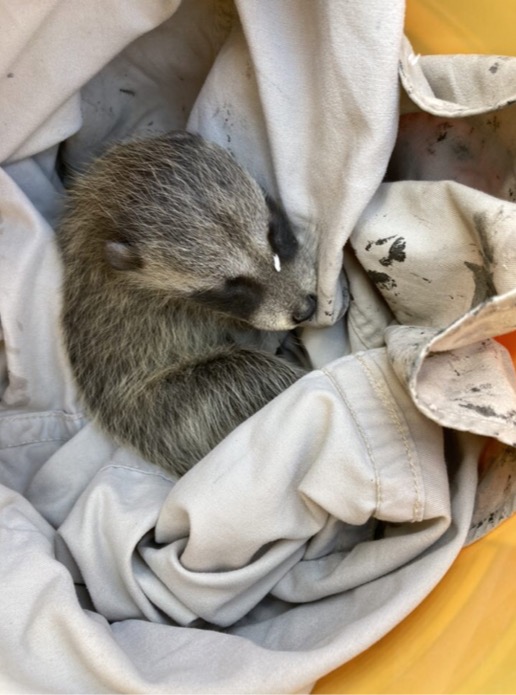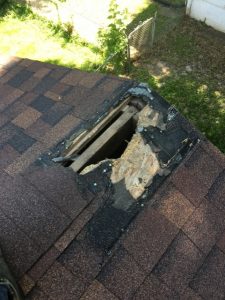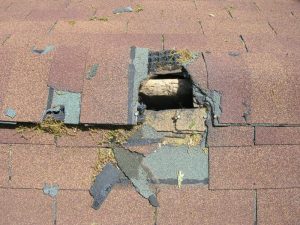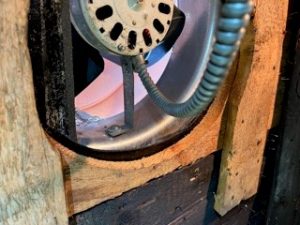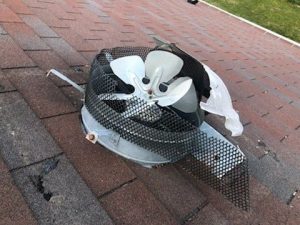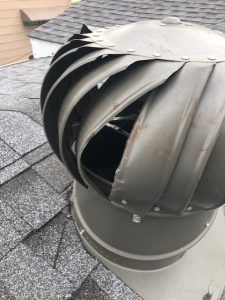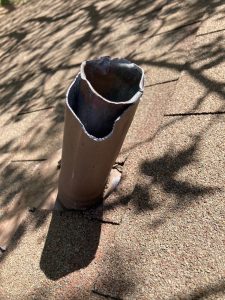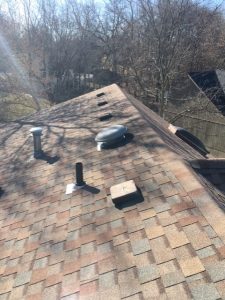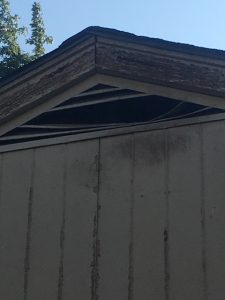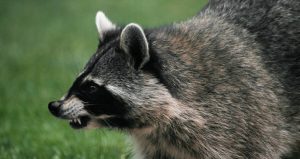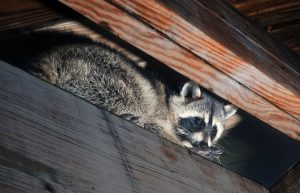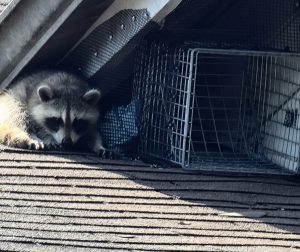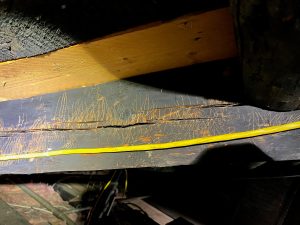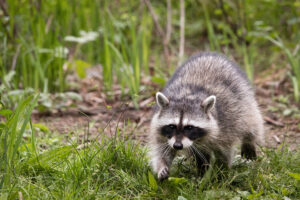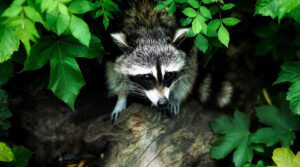Shelter, available food sources, and water can attract raccoons to your property. Once raccoons find a stable food source, they will look for safe shelter. Especially during the spring, female raccoons seek out safe places to give birth. The raccoon’s natural denning location is a hollow tree, and areas of your home like attics and chimneys have the ideal conditions for a raccoon den.
Raccoons can get into your attic from a variety of entry points. They will either find an existing entry hole or create their own. They don’t even need a large hole. For an animal that can be as large as twenty pounds, raccoons only need a gap the size of a grapefruit. Raccoons are excellent climbers and can gain access via an overhanging tree limb, a downspout, or the siding of the house.
Five Entry Points for Raccoons
Chimneys
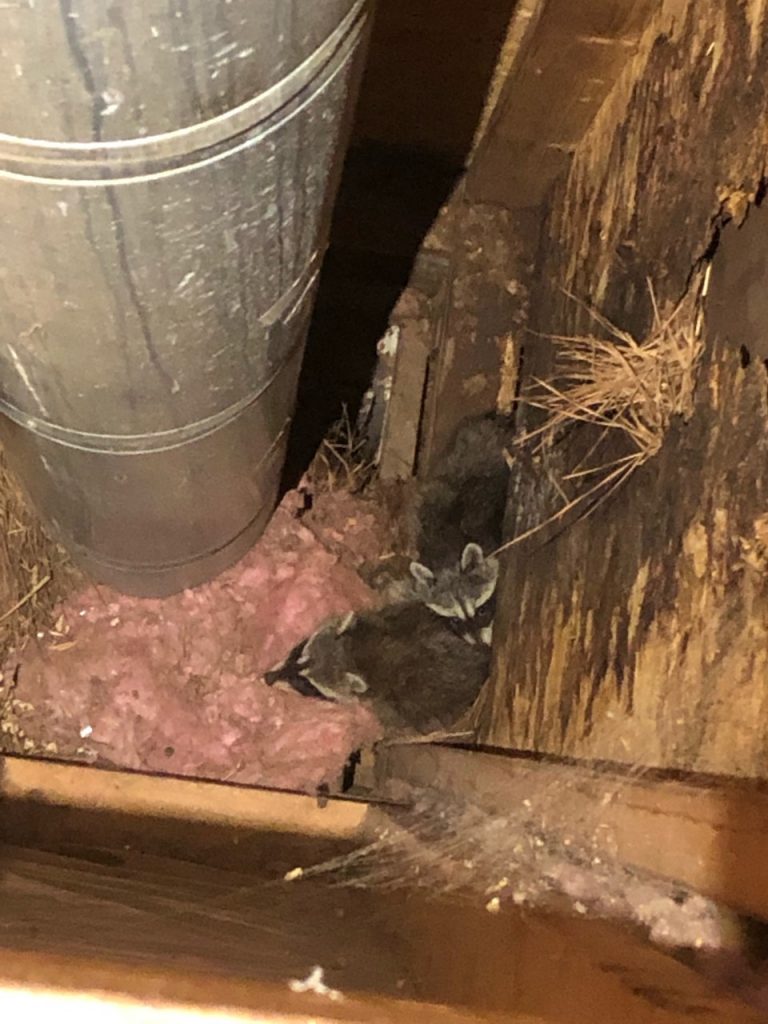
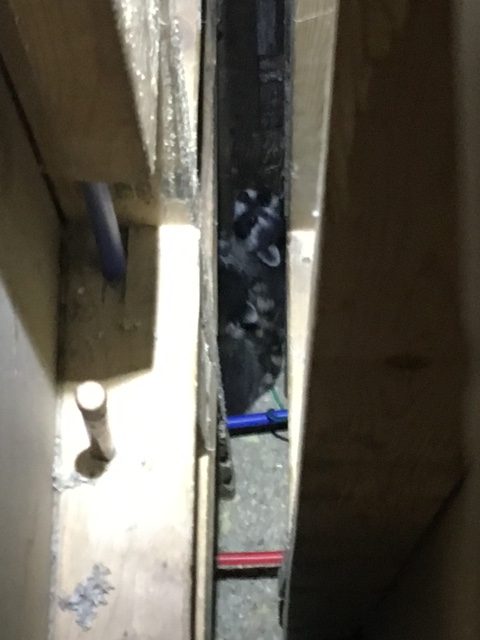
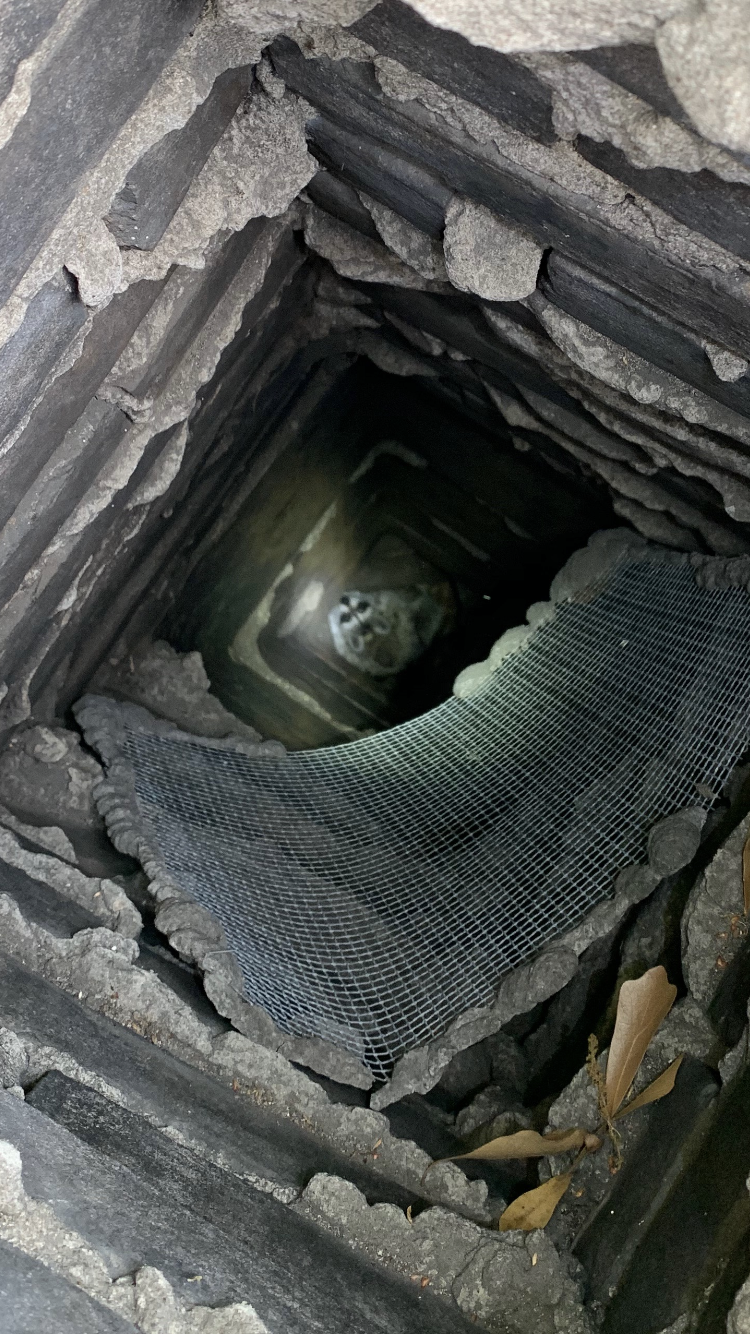
A hollow tree is the natural raccoon den site and chimneys have the same characteristics as a hollow tree. Raccoons can easily climb bricks, and chimneys provide easy entry points especially if there is no chimney cap.
Soffits
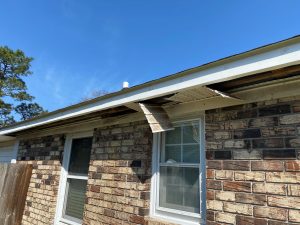
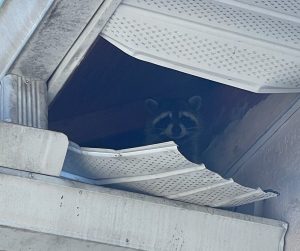
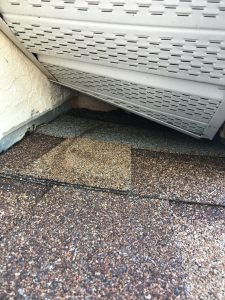
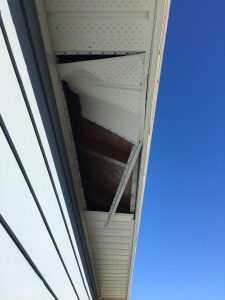
A soffit is any finished material installed to cover the underside of the roof overhang. Soffits provide protection from the weather, bugs, mold, rust, and other pests. Raccoons can find gaps in improperly installed soffits or tear open a new entry hole.
Roof Edge
A fascia board is a thin longboard that runs along the lower outer edge of your roof and covers the entire roofline. Not only do fascia boards hold the gutters but also they provide ventilation. It is not uncommon to find a construction gap between the fascia board and the roof line.
Raccoons take advantage of the construction gap.
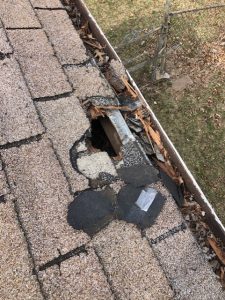
A homeowner heard thumping late at night. The local Dallas Trutech team found this hole along the roof line where the raccoon had gained access.
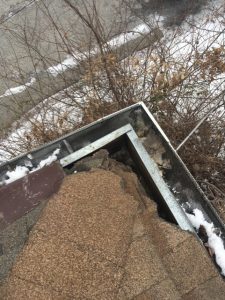
During one especially cold winter, a raccoon in Raleigh escaped the cold in this attic. It created a nest using insulation.
Roof Ridge
The roof ridge provides another entry point. Most roofs have a ridge vent which raccoons can exploit the openning to create a bigger one. But raccoons don’t need to find a weakness. They have the strength and tenacity to tear through shingles and plywood.
Roof Vents
A home needs to breathe. Proper ventilation along the roof can extend the lifetime of your roof, improve energy efficiency in your home, and make the home a healthier place to live.
Ridge vents, box vents, and roof turbines remove stale air from your attic; whereas, whereas soffit vents, gable vents, and over-fascia intake vents bring in fresh air. These vents also present a natural entry point for raccoons. Usually, the materials of these vents will stop a raccoon.
Raccoon Damage in Attic
Raccoons damage in the attic can be expansive and costly. Raccoons may chew and claw through wooden beams, insulation, electrical wires, pipes, ductwork and other structural components, potentially causing serious damage to the attic and your home’s infrastructure.
The most common damage caused by raccoons in the attic includes building dens and creating latrine sites. Both activities destroy the attic’s insulation.
Mother raccoons enter attics because it is a safe place to give birth. The females will use insulation and other materials to create a nest for the baby raccoons.
Health Risk of a Raccoon Infestation
A raccoon family while cute poses a health risk to you and your family. They designate a latrine site in your attic for feces and urine. Their droppings are breeding grounds for raccoon roundworm. Ectoparasites like fleas and ticks can infest your home. The fleas and ticks can find their way to you an your family.
How to Get Rid of Raccoons from my Attic
Repellents are not effective. Raccoons will eventually get used to bright lights or loud music. Mothballs are dangerous and ineffective. The only exception is raccoon eviction fluid, and that only works if a mother raccoon has a nest of young raccoons in your attic.
At Trutech, our raccoon removal process includes cage traps, clean-up and sanitization, and exclusions. Once we ensure the raccoons are trapped and removed, we clean up the mess. We apply sanitization agents on latrine sites and ectoparasite treatments to exterminate the fleas and ticks.
The final step in raccoon removal is to protect your home from future raccoon problems. We identify all current and potential points of entry and seal the house. This process of exclusion provides long-term and immediate raccoon control.
